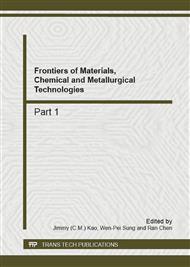p.715
p.719
p.723
p.727
p.731
p.735
p.739
p.743
p.747
Removal of Iron in Hot Acid Leach Liquor by Hematite Process
Abstract:
Lab-scale iron removal experiments were carried out in a batch 2-L autoclave to investigate the variables such as temperature, gas kind, for a better option for removal of iron in hot acid leach liquor in zinc conventional process. Experimental results showed precipitation temperature and duration is the most important factors, followed by pressure, and finally gas kind and stirring rate. Under a reasonable precipitation conditions: gas kind, air; temperature, 130oC; pressure, 0.8 MPa; duration, 15 min, iron precipitation yield reached 75.12%. Iron precipitation is relative pure and therefore it can be marketable.
Info:
Periodical:
Pages:
731-734
Citation:
Online since:
October 2012
Authors:
Keywords:
Price:
Сopyright:
© 2012 Trans Tech Publications Ltd. All Rights Reserved
Share:
Citation:


